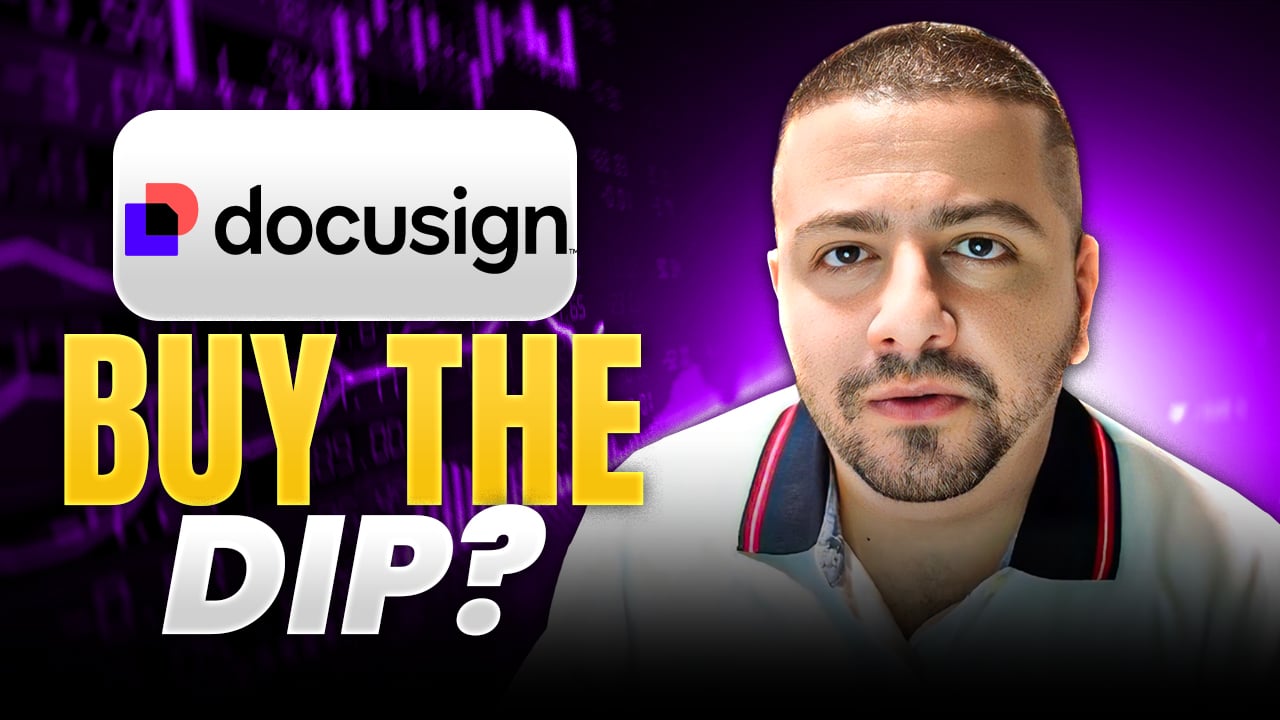DocuSign (DOCU +0.17%) is currently in growth mode and raised more than $600 million at its IPO in order to fund its continued expansion. But what's going to keep its customers loyal to the platform over the long term?
In this episode of The Motley Fool's Industry Focus: Technology, host Dylan Lewis and Fool.com contributor Brian Feroldi take a closer look at DocuSign's financial statement, competitive position, and future potential in order to figure out if this business can continue to lob up lofty growth numbers.
A full transcript follows the video.
This video was recorded on Nov. 16, 2018.
Dylan Lewis: We are going to be doing another breakdown of a company that has been publicly traded for a little bit, and that is DocuSign. This is another software-as-a-services company. Brian, I know how much you love the SASS space, so I had to bring you on to talk about them.
Brian Feroldi: Absolutely. I love SAAS companies. DocuSign is a recent IPO. I went through my checklist on them, and I think there's a lot to like about this business.
Lewis: When we did that episode on Upwork a little while back, we got so much positive listener feedback on your approach that it only made sense to do this again. Why don't we start out with the backstory on this company, how they got to where they are now?
Feroldi: DocuSign, as I'm sure many listeners know, they are a leader in the move to e-signatures. DocuSign was founded in 2003 by an entrepreneur name Tom Gonser. He looked around the world and he saw that everything was going digital, but the foundational business process, like the agreement where two sides of parties agree to some terms, that was still done using pen and paper. That process had not been updated in centuries. He decided to disrupt the process, and he founded DocuSign with the goal of moving the entire agreement online. The opportunity that he saw would be, if you could move it online, you would make it far faster, lower cost, and you would greatly improve accuracy over the traditional way.
And if you look at DocuSign today, they now have hundreds of thousands of customers that pay them for their services. Millions of people have used DocuSign in one way or another. They have been wildly successful.
Lewis: Not only have we researched this company, we are users of the platform. I've used it to make some signatures for Fool internal stuff, and I know you've used it, as well, Brian.
Feroldi: I used it actually just this week to open up a new account with Vanguard. When I was on the phone with the rep trying to open my account, he told me that he was going to send me a DocuSign. I think there's an argument to be made that the name has become synonymous with the product.
Lewis: And we love to see that as investors, because it means that a company has a pretty good foothold in a space. With that background, on today's show, in case anyone missed the episode we did on Upwork, we're going to put DocuSign through Brian's patent-pending six-step stock ringer. That is going to be a look at the financials, moat, potential, customers, management, and risks facing this business. Then, we'll wrap up talking a little bit about what we think of the stock, and anything else people should be aware of. Brian, why don't we kick things off looking at the books?
Feroldi: DocuSign went public in April. They raised about $629 million at their IPO before subtracting fees. A good chunk of that, about $440 million, went right into the company's bank account. Another $150 million was used to cash out existing shareholders. After the IPO, they had over $818 million in cash on their balance sheet as of the end of the second quarter, and no debt. Just a couple of weeks ago, they added another $500 million through a convertible note offering that closed in September. That did bring debt into their books, but it's convertible, so there's a possibility that they might not have to pay that back. So, this company has lots of cash and a little bit of debt now.
Lewis: While there is cash in there from this IPO process, and while the company is growing a decent amount, it is currently operating at a GAAP loss, as people might expect for a relatively early stage as-a-service business. This is something pretty common for the space.
Feroldi: Yeah. DocuSign is purposely operating at a small GAAP loss because they are investing aggressively into growing out the company. Specifically, they're spending heavily on sales and marketing. To put the number in context, last quarter, the second quarter, they lost in total about $36 million. That's really a drop in the bucket compared to their $1.3 billion plus in cash that they now have on their balance sheet. It's also important to know that that loss was on a GAAP basis. If you look at their free cash flow, they actually produced $18 million in free cash flow during the same time period. So, I don't think the GAAP loss is a huge issue.
Lewis: Turning our gaze to the second criteria you like to look at, Brian, that is moat. One of the reasons why you really focus on the SAAS space is because these products tend to be very sticky. Once you get people using them, you get very comfortable using them, there are pretty high switching costs of doing that. People get used to the interface. It gets built into workflows at businesses. It's really difficult to break that once it's there.
Feroldi: DocuSign, I think, has a couple of advantages going for it that will make it continue to be the leader in the space. First off, DocuSign works with many different tech giants and has their software embedded in 300 different pre-built integrations with some very popular programs that are made by giants like Alphabet, Microsoft, Oracle, Salesforce. If you want to use a DocuSign, and you're using those products natively, it's a very seamless integration because it's already pre-built in. That convenience is one of the reasons why its software is very, very sticky.
A nice metric that you can look at to determine how sticky a SAAS business is a dollar-based net revenue retention rate, which basically says, from one year to the next, how much money are the same existing customers spending with the platform? Most recently, that figure was 115%. So, not only is DocuSign keeping its customers around, but its existing customers are spending more with DocuSign each and every year. And those just lead to wonderful economics over time.
Lewis: That dollar-based net retention rate number is a little wonky. People in the SAAS space know it well. If you're not familiar with it and you follow restaurant stocks, think of it as a comps number. You have a store that was open a year ago, you have it open now. How are those sales performing? That rate of 115% is pretty darn high. Correct me if I'm wrong, Brian, they've typically been in the 112-119% range with that metric. There are a lot of SAAS companies that would kill for that type of net revenue retention rate number. Most of them are slightly over 100% if they're doing OK.
Feroldi: Yeah, that's exactly right. Another thing that I think is working in DocuSign's favor is that its brand is extremely well-known. The name DocuSign, as I mentioned before, is quickly becoming a verb. People say, "I'm going to DocuSign something." That creates instant name recognition. Another reason that stands out is, when a company is looking to adopt an e-signature platform, the name DocuSign not only instantly comes to mind, but there's a lot of social proof out there, because these guys have so many customers. That makes it easy for them to choose DocuSign because they're the leader. And DocuSign has the data to show that their signature has never been challenged in a court of law. They have the data to prove that, when somebody signs using their e-signature platform, it stands up in a court of law.
Lewis: Turning to item #3, this is potential. This is really just a look at what is out there in terms of a total addressable market? What is out there in terms of a customer base? It seems like this is a company that is going to benefit from some pretty strong tailwinds.
Feroldi: The paper and pen, despite how long DocuSign has been out there, is still the dominant way that agreements are made in the world of business today. But DocuSign does have hundreds of thousands of customers. As of the end of the last fiscal year, it had over 370,000 customers that were paying DocuSign, including tens of thousands of them that had at least 250 employees. These are fairly big-sized customers. That number sounds impressive, but DocuSign believes that it's penetrated about 1% of its total core target market. When you take all the potential agreements that are out there that are made every day, only about 1% of them are currently made through DocuSign's platform. Management estimates that its total addressable market, when you add everything together, is about $25 billion. When you compare that to the $518 million that it hauled in last year, there's plenty of room left for this company to grow.
Lewis: I think there's a really big opportunity for this business internationally, too. Right now, most of their revenue, about 80%, is coming from the U.S. Management has talked a decent amount about how there's a pretty big international opportunity out there. I'm inclined to agree.
Feroldi: I totally agree. DocuSign also can make use of M&A and also layer in additional services over time to expand its total addressable market, too.






